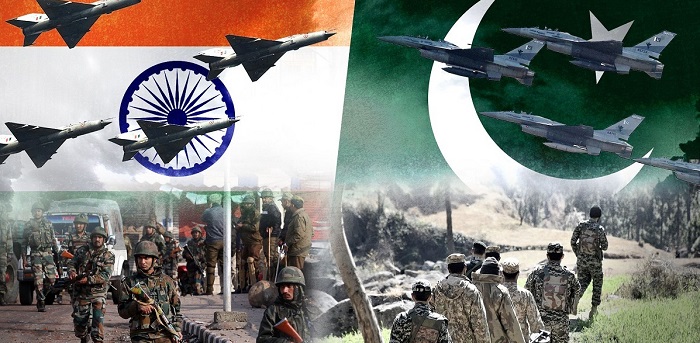SR Darapuri, National President, All India People’s Front
Courtesy: Grok.com

(Asian independent) The 2025 India-Pakistan conflict, sparked by a terrorist attack in Indian-administered Kashmir on April 22, 2025, and escalating with India’s Operation Sindoor on May 7, was a brief but intense clash with no clear victor. Both nations experienced strategic gains and losses, as outlined below, based on available information.
India’s Gains
– Demonstrated Military Reach and Resolve: India conducted deep strikes into Pakistan, targeting nine sites in Pakistani-administered Kashmir and Punjab, including airfields and near a strategic military headquarters. These strikes, using Sukhoi Su-30 MKI jets with Brahmos missiles, showcased India’s ability to penetrate Pakistani defences, with satellite imagery confirming damage to Pakistani
– Reasserted Deterrence: India’s aggressive response to the Pahalgam attack, which killed 26 civilians, reinforced its stance against cross-border terrorism, framing such acts as tantamount to war. This bolstered India’s image as a decisive regional
– Diplomatic Leverage: India’s suspension of the Indus Waters Treaty and closure of the Attari-Wagah border post signaled economic and diplomatic pressure on Pakistan, potentially strengthening India’s negotiating
India’s Losses
– Aerial Losses: India reportedly lost at least two to three fighter jets, possibly including a Rafale, during engagements with Pakistan’s air force. India’s refusal to confirm these losses fueled speculation and embarrassed its military, revealing vulnerabilities in the Indian Air.
– Strategic Setback: Analysts noted that Operation Sindoor underperformed, failing to decisively dismantle militant infrastructure. The conflict also rekindled the Kashmir issue internationally, undermining India’s narrative of regional stability and economic rise
– Civilian and Military Casualties: India reported nearly two dozen deaths, including civilians and security personnel, due to Pakistani retaliatory strikes and border shelling
Pakistan’s Gains
– Air Force Performance: Pakistan claimed to have downed up to five Indian jets, including advanced Rafales, in a significant aerial engagement. While evidence remains murky, these claims boosted Pakistan’s military morale and showcased its air force’s combat experience from counterterrorism
– Reasserted Kashmir Narrative: The conflict refocused global attention on Kashmir, aligning with Pakistan’s long-standing position. Pakistan’s narrative of Indian aggression targeting civilians, including strikes on mosques, gained some traction.
– Ceasefire as Victory: Pakistan framed the U.S.-brokered ceasefire on May 10 as a diplomatic win, claiming it restored deterrence without major escalation. Prime Minister Shehbaz Sharif emphasized resolving disputes through negotiation, enhancing Pakistan’s image as a rational actor
Pakistan’s Losses
– Civilian and Infrastructure Damage: Pakistan reported 31 civilian deaths and significant damage to civilian areas, including mosques, from Indian strikes. Military infrastructure, including airfields, was also hit, exposing defensive weaknesses
– Economic Strain: The conflict exacerbated Pakistan’s fragile $350 billion economy, already recovering from a 2024 crisis. The closure of airspace and border posts disrupted trade, with Pakistan losing 2.2 times more than India relative to GDP
– Military Casualties: India claimed Pakistan lost 35–40 personnel, though exact figures are unverified. Pakistan admitted minor damage to one aircraft, indicating some military losses
Broader Context and Analysis
– No Clear Winner: Analysts, including those cited by CNN and Al Jazeera, concluded neither side achieved a decisive advantage. Both nations claimed victories to domestic audiences, but the conflict highlighted mutual vulnerabilities
– Nuclear Risk: The proximity of Indian strikes to Pakistan’s nuclear planning facilities raised alarms, underscoring the risk of miscalculation between nuclear-armed neighbours.
– Ceasefire Fragility: Despite the May 10 ceasefire, both sides accused each other of violations, with shelling reported along the Line of Control. This suggests ongoing tensions that could reignite
– International Mediation: The U.S., Saudi Arabia, and Iran played roles in brokering the ceasefire, but the lack of a lasting peace deal keeps the region volatile.
Conclusion
India gained by projecting power and deterrence but lost aircraft and strategic clarity, while Pakistan bolstered its air force’s reputation and Kashmir narrative at the cost of civilian lives and economic strain. The conflict, rooted in the Kashmir dispute, ended in a fragile ceasefire without resolving underlying issues, leaving both nations with pyrrhic victories and heightened risks for future clashes. For a deeper understanding, cross-verifying claims with primary sources or satellite imagery would be ideal.








